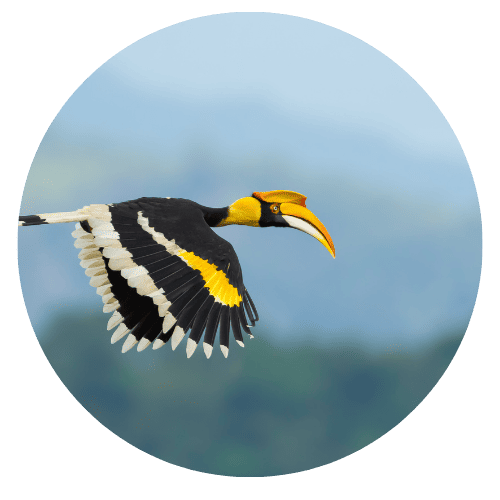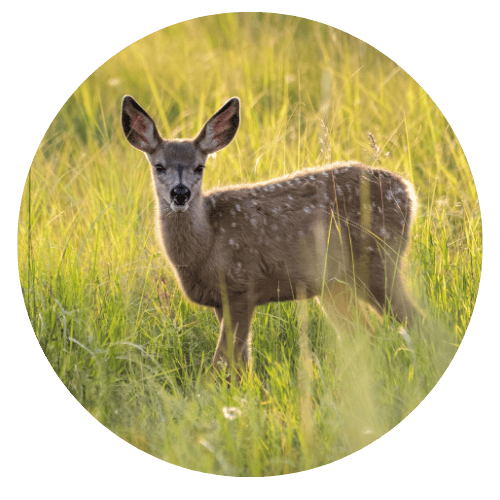
Indian One-Horned Rhinoceros
Kaziranga hosts the world’s largest population across floodplain grasslands and beels—an enduring conservation success built on strict protection and habitat management.

Kaziranga National Park is a UNESCO World Heritage Site renowned for its rich biodiversity across wetlands, tall grasslands, and tropical forests. This page summarises flagship species and their conservation status, alongside key avifauna, reptiles, and flora that sustain the park’s food webs. Prepared by Jungleciti Research Team

Kaziranga hosts the world’s largest population across floodplain grasslands and beels—an enduring conservation success built on strict protection and habitat management.

An apex predator indicating ecosystem health; Kaziranga forms part of a high-density tiger landscape with abundant prey and secure corridors.

Large herds use marshes and tall swamps; conservation challenges include hybridisation with domestic buffalo and disease spillover.

Family herds range between grasslands and woodlands; landscape connectivity with Karbi Anglong hills is vital for seasonal movement.

Specialist of marshy meadows and tall wet grass; forms key prey base supporting large carnivores.

India’s only ape; strictly arboreal with haunting dawn calls. Occurs in select forest patches in Assam’s Brahmaputra valley.

A flagship frugivore and vital seed disperser; prefers mature forests with large nesting trees.

A familiar wetland sentinel; hunts from low perches along oxbow lakes, channels, and beels.
*CITES listings can be country-specific in Appendix III; statuses are indicative. Always refer to the latest IUCN Red List, CITES Appendices, and India’s Wildlife (Protection) Act notifications for updates.
| Common Name | Scientific Name | IUCN | CITES | WPA 1972 |
|---|---|---|---|---|
| Great Adjutant | Leptoptilos dubius | Endangered | — | Schedule IV |
| Lesser Adjutant | Leptoptilos javanicus | Vulnerable | — | Schedule IV |
| Black-necked Stork | Ephippiorhynchus asiaticus | Near Threatened | — | Schedule IV |
| Pallas’s Fish Eagle | Haliaeetus leucoryphus | Endangered | — | Schedule I |
| Bar-headed Goose | Anser indicus | Least Concern | — | Schedule IV |
| Spot-billed Duck | Anas poecilorhyncha | Least Concern | — | Schedule IV |
| Grey-headed Fish Eagle | Haliaeetus ichthyaetus | Near Threatened | — | Schedule I |
| Common Name | Scientific Name | IUCN | CITES | WPA 1972 |
|---|---|---|---|---|
| Gharial | Gavialis gangeticus | Critically Endangered | Appendix I | Schedule I |
| Mugger Crocodile | Crocodylus palustris | Vulnerable | Appendix I/II (popn. specific) | Schedule I |
| Indian Rock Python | Python molurus | Near Threatened | Appendix I/II (subspecies) | Schedule I |
| King Cobra | Ophiophagus hannah | Vulnerable | Appendix II | Schedule II |
| Assam Roofed Turtle | Pangshura sylhetensis | Endangered | Appendix II | Schedule I |
| Common Name | Scientific Name | Notes |
|---|---|---|
| Elephant Grass | Pennisetum purpureum | Tall grasslands; key ungulate forage and cover. |
| Imperata Grass | Imperata cylindrica | Fire-adapted; dominates dry grass patches. |
| Water Hyacinth (invasive) | Eichhornia crassipes | Chokes beels; requires periodic removal. |
| Silk Cotton (Semal) | Bombax ceiba | Nesting and roosting resource for large birds. |
| Ficus spp. (Fig trees) | Ficus spp. | Crucial year-round fruit for hornbills and primates. |